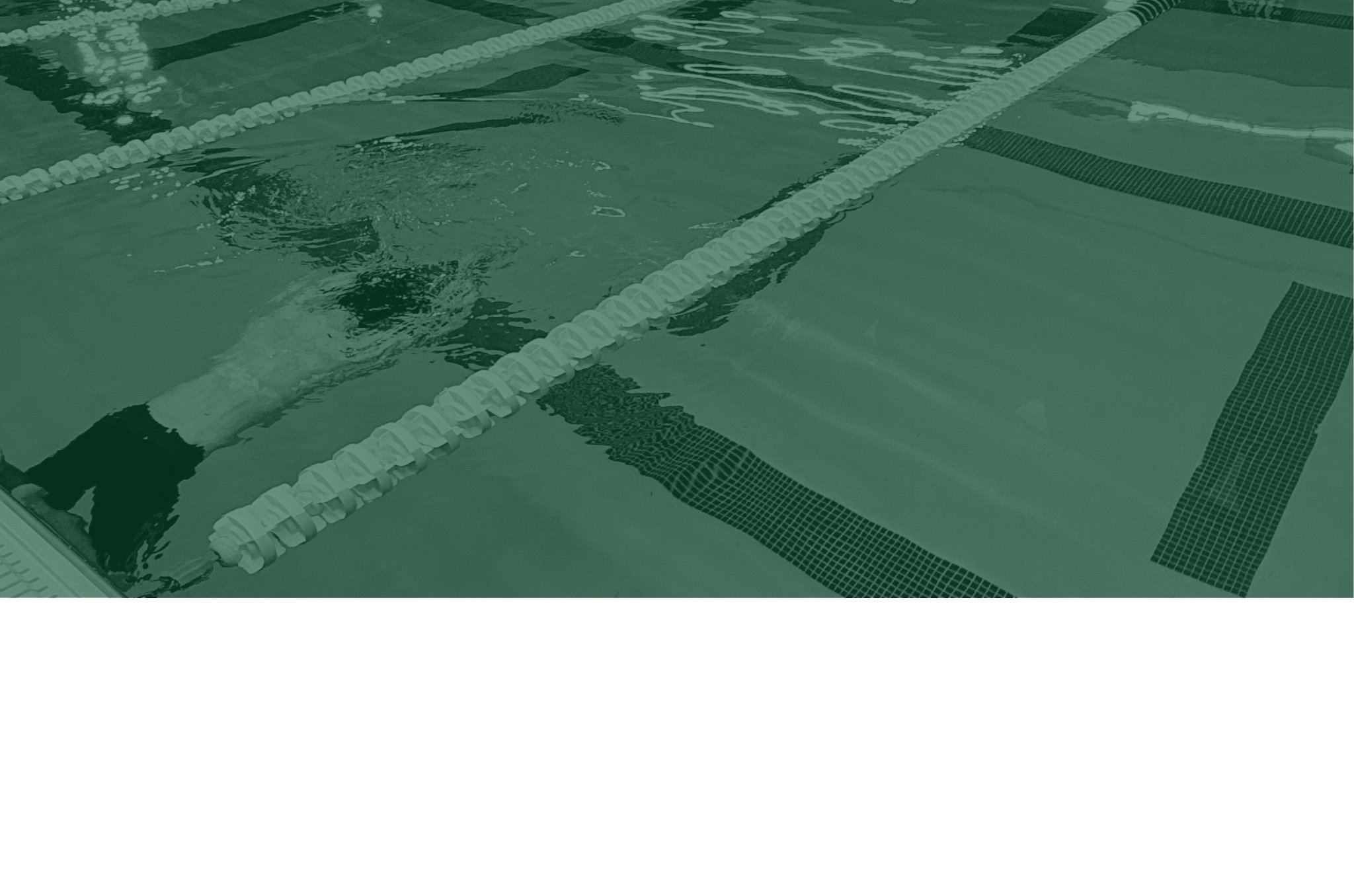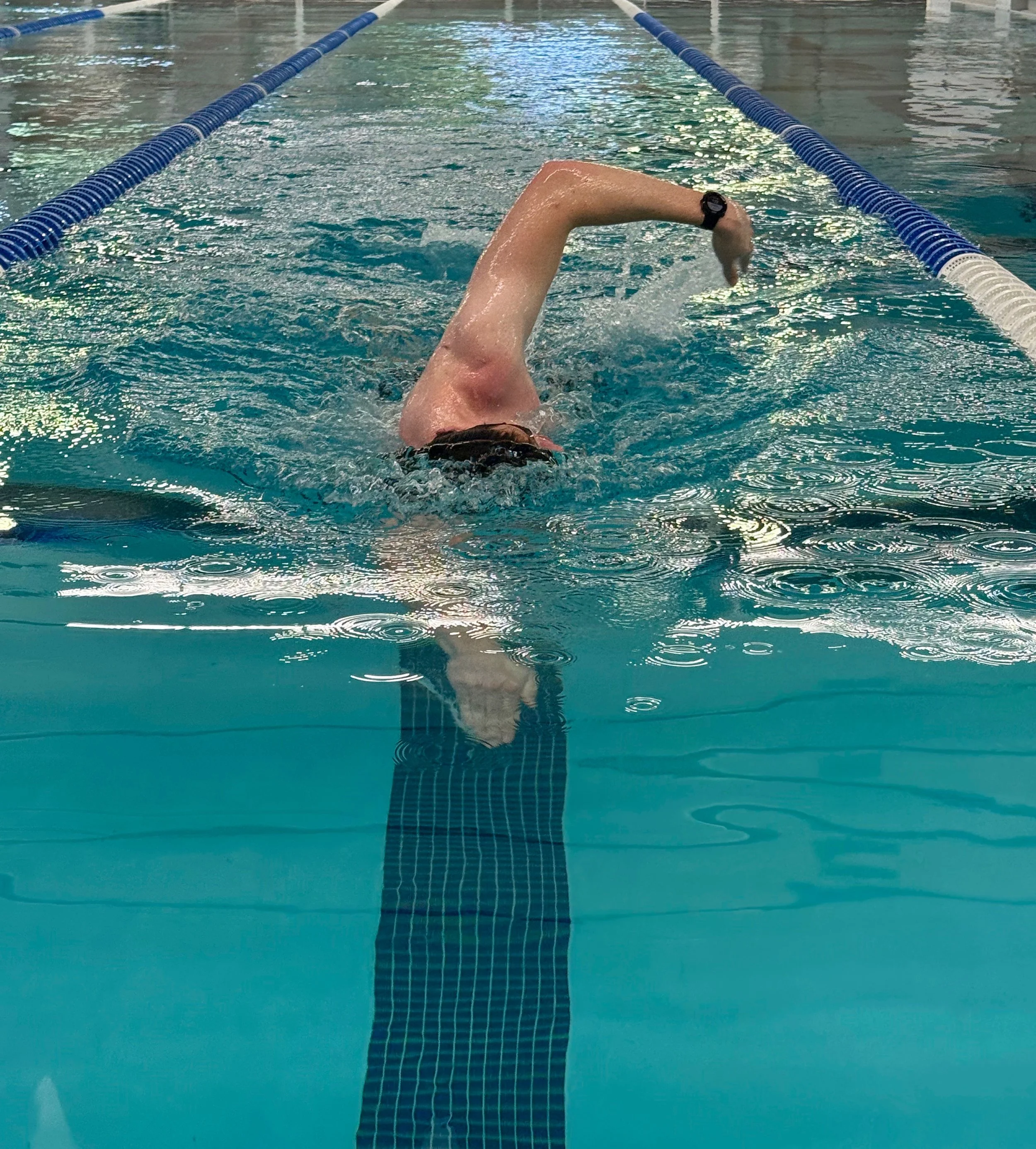
Physical Therapy for Swimmers
in Arlington, VA
% of adolescent swimmers regularly taking medication for shoulder pain
% of adolescent swimmers who regularly experience shoulder pain
Shoulder Pain: Not a Swimming Requirement
Swimming is often viewed as a low-impact activity- but low impact doesn’t always mean injury free. Whether you're competing or swimming for fitness, repetitive strokes create significant load: elite swimmers can perform up to 30,000 arm rotations per week, and even recreational swimmers may hit 3,000+ rotations weekly during just a few pool sessions (Trinidad et al., 2023).
Many swimmers push through shoulder pain - but some pain can be problematic if ignored too long.
As a lifelong swimmer, I understand the unique loads on the body that swimmers face. My one-on-one care model lets us dig into the root of your pain, address mobility and strength deficits, and help you return to the pool confidently.
When is Swimming about More than Swimming?
Exercise is often about more than just “working out”- it can be a stress reliever or even a lifeline, and swimming is no exception. That’s why I don’t sideline you- I help you stay in the water while rebuilding strength and confidence.
Whether you’re preparing for your next meet, getting back to Masters swimming, or just want to enjoy pain-free laps again, I’m here to help.
At Persist PT, you get a rehab plan tailored to swimming’s unique demands—stroke, volume, and all.
Based in Arlington, VA, I serve swimmers across Northern Virginia.
Ready to dive in? Book your swim-focused physical therapy evaluation today and swim stronger, smarter, and injury-free
-
Shoulder pain is the most common swimming injury—with prevalence ranging from 42% to over 90% in competitive swimmers, and about 35% of elite-level swimmers experiencing pain that disrupts training.
“Swimmer’s Shoulder” is a general term - every swimmer is different, and may have different limitations. These could include restricted mobility, shoulder joint instability, and rotator cuff weakness (especially external rotation).
Through techniques like tailored strength exercise, motor coordination drills, and swimming form modification, we can work together to alleviate pain and help you stay in the water.
-
Repetitive breathing and head rotation in strokes like freestyle and butterfly place high demands on the neck. While precise prevalence is less often reported, studies suggest these demands frequently lead to cervical stiffness and pain in competitive swimmers, especially those with poor thoracic (upper back) mobility .
We can address issues with the neck using manual therapy, targeted mobility work, and stroke cueing to promote alignment and reduce neck strain during workouts.
-
Low back issues affect up to 25–33% of swimmers, often due to repeated hyperextension and poor trunk coordination at high volumes .
My sessions focus on improving thoracic rotation, lumbar control, and hip mobility, using trunk strengthening and dry-land retraining to reduce extension stress in the pool and support efficient stroke mechanics.
-
Breaststroke places unique demands on the knee, often leading to medial or inner knee pain from repeated frog kicking.
I evaluate hip mobility, strength, and technique to ensure you’re generating enough force from the right muscles—not overloading the knee.
Rehab includes hip and knee-focused strengthening, joint mobility, and guidance on modifying stroke mechanics during recovery.






